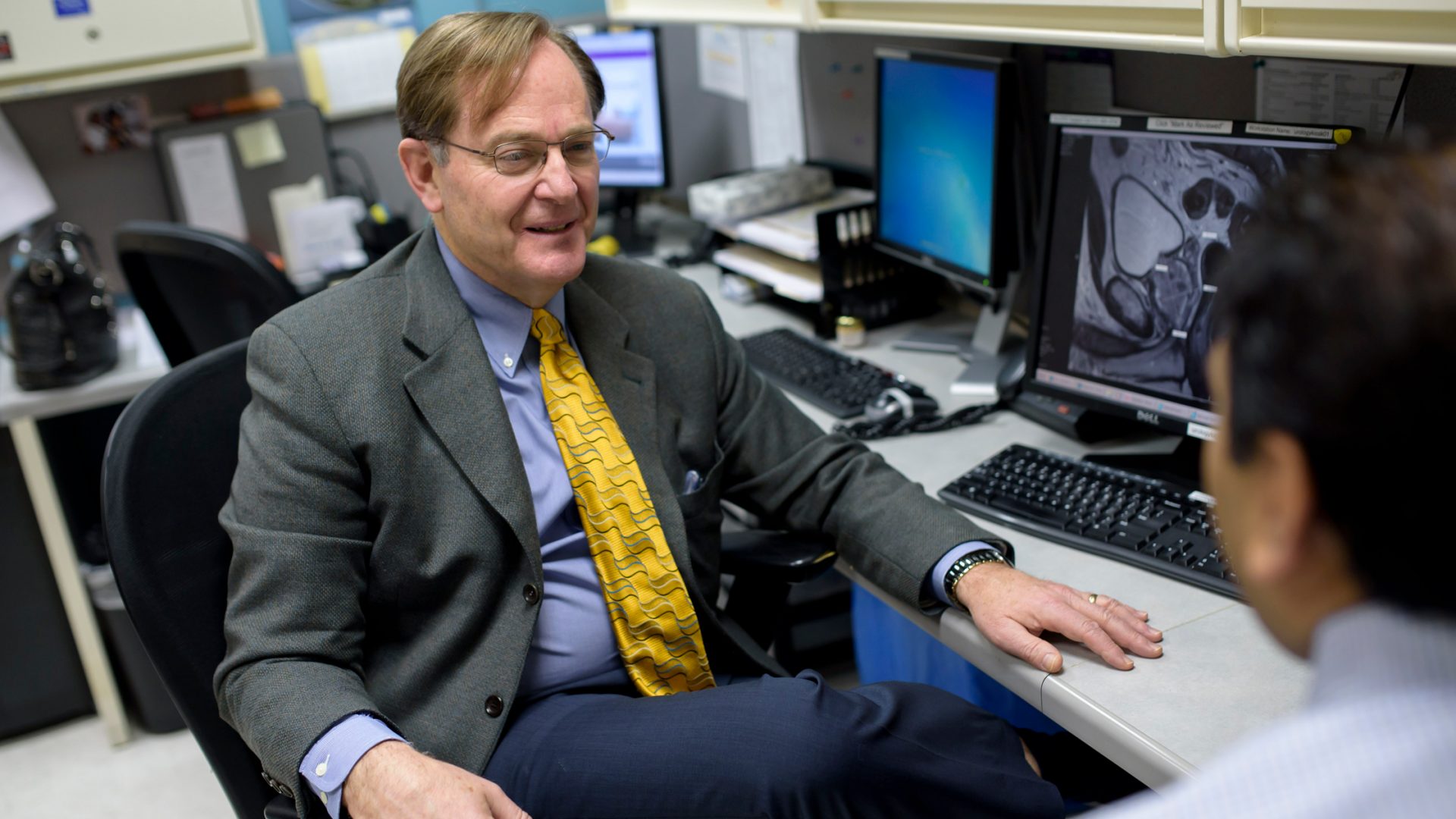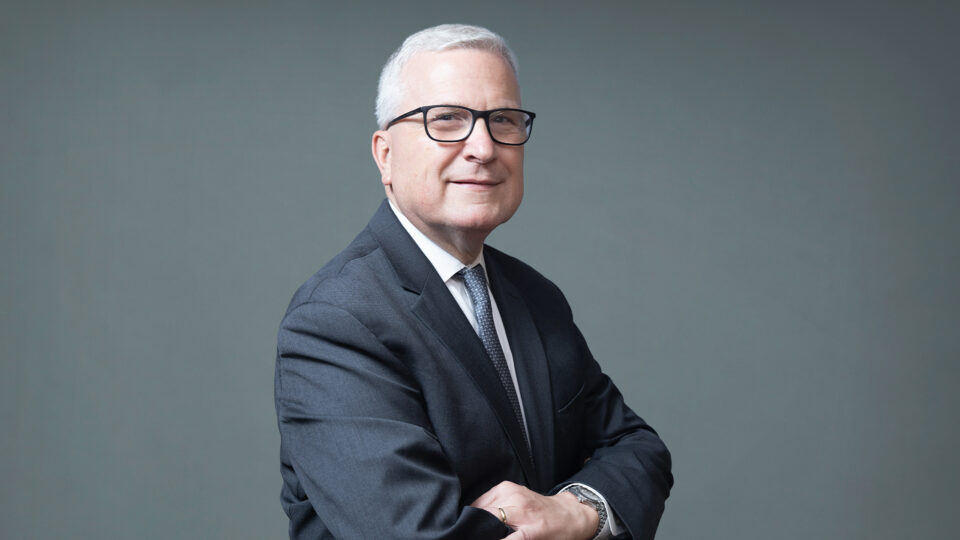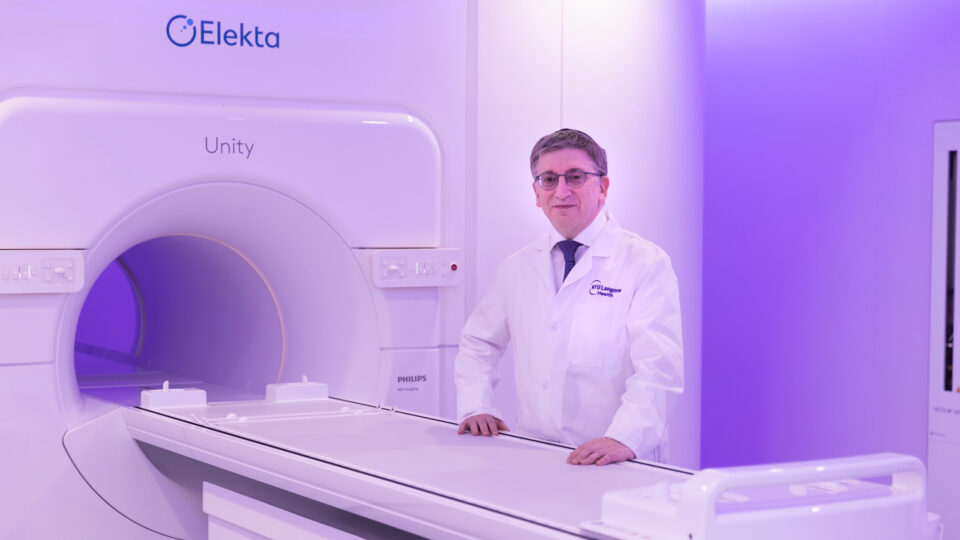Nationally renowned as an expert on prostate cancer and radical prostatectomy, Herbert Lepor, MD, is now convinced of the promise of focal ablation—an evolving nonsurgical approach to treating prostate cancers. Here, he discusses what spurred his interest in focal therapy and how the robust prospective registry at Perlmutter Cancer Center is helping to define best practices.
Pinpointing Sites of Clinically Significant Cancer
Physician Focus: What advancements have helped the field of focal therapy evolve?
Dr. Lepor: Accurate localization of the sites of clinically significant prostate cancers is key to successful focal ablation. The work that was done here at NYU Langone Health in imaging and targeted biopsies really set the stage for the field of focal therapy.
Historically, when urologists nationwide would do a biopsy of the prostate, we randomly inserted 12 needles into the gland. Ultrasound was our imaging platform at the time, and it does not provide information on where we should be focusing to detect cancer.
When advancements in imaging came along, NYU Langone was one of the first centers to do MRI and later MRI–ultrasound fusion guided biopsy for prostate cancer. Once we were confident in our ability to reliably identify clinically significant cancer, we were ready to investigate focal therapy.
Convincing Early Research
Physician Focus: What early research convinced you that focal therapy is a promising treatment option for prostate cancer?
Dr. Lepor: In 2018, we published a study in Urology showing that MRI was extremely accurate at identifying index tumors, or the tumors likely to grow and metastasize. Of 59 patients who underwent radical prostatectomy and who were also potential candidates for focal therapy, only a small proportion of low-volume cancers would have been missed if those patients had received focal therapy.
For me, that was the first study that confirmed that if we can reliably destroy the index cancer, then it would be safe to follow the rest of the prostate for the development of significant disease.
A Favorable Approach
Physician Focus: What patient groups are best suited for focal therapy and how many of your patients choose this treatment approach?
Dr. Lepor: We are treating patients with clinically localized, intermediate-risk prostate cancer who would also be candidates for whole gland treatment. If a patient has low-risk cancer, we’re likely not going to use focal therapy since these men are best managed with active surveillance.
Maybe 30 percent of the patients referred to me with prostate cancer are candidates for focal therapy, and when I give them the option, two-thirds choose focal therapy and one-third choose radical prostatectomy. There are many reasons for this, including the fact that focal therapy is an outpatient procedure, it doesn’t require hormone therapy, and we’ve never had a patient report incontinence.
While focal therapy can affect sexual function, it is much less than with a surgical procedure, even with a nerve-sparing surgical procedure. In addition, if the cancer recurs, we still have every option available to us—we can do radiation therapy, remove the prostate, or do another focal ablation.
Establishing Best Practices
Physician Focus: At NYU Langone, urologists no longer recommend a six-month MRI or biopsy following focal ablation. What led to this decision to defer early follow-up?
Dr. Lepor: We already have a robust prospective database of roughly 400 patients that have undergone focal therapy at our center. Using that database, Dr. James S. Wysock and I recently published a study in Prostate Cancer and Prostatic Diseases reporting that at six-month follow-up, when we aggressively biopsied for in-field disease, we detected residual cancer in only 2 percent of patients. In other words, we succeeded in destroying the index cancer in 98 percent of cases, confirming that focal ablation is an excellent treatment option for a subset of patients. Therefore, at our high-volume center with our expertise and stringent patient selection, a six-month follow-up is not necessary.
“We succeeded in destroying the index cancer in 98 percent of cases, confirming that focal ablation is an excellent treatment option for a subset of patients.”
Herbert Lepor, MD
We’re now assessing whether follow-up biopsy is necessary at two years, which to my knowledge, no series has ever assessed oncological outcomes from mandatory two-year biopsy.
A Commitment to Follow-Up
Physician Focus: You’ve mentioned a need for thorough commitment from both the patient and the provider regarding follow-up after focal therapy. Can you elaborate?
Dr. Lepor: This is really important. In my opinion, the greatest risk to focal therapy is patients not coming back for their follow-up.
With focal therapy, there is a real chance of leaving cancer behind or cancer recurring because the majority of the prostate is untreated. But if we find any residual disease early, then we have all those salvage options available—focal ablation, radiation, and surgery. If the patient doesn’t come back for five years, that may give too much of a lead time for that residual cancer to become a big problem.
“In my opinion, the greatest risk to focal therapy is patients not coming back for their follow-up.”
Of course, getting patients to come in for follow-up can be a challenge. We are trying to minimize this burden on patients by determining how long follow-up can be safely deferred, or identifying the subset of patients that can defer early follow-up.
Read more from our experts in Urology






